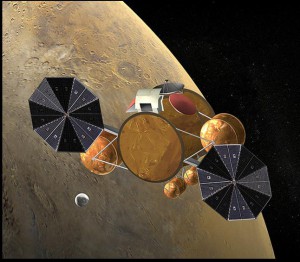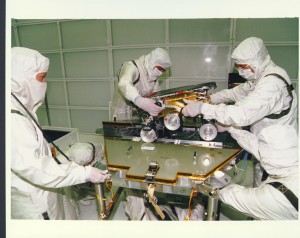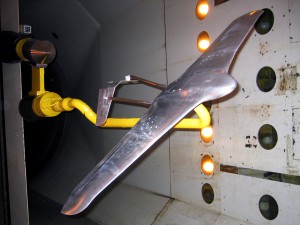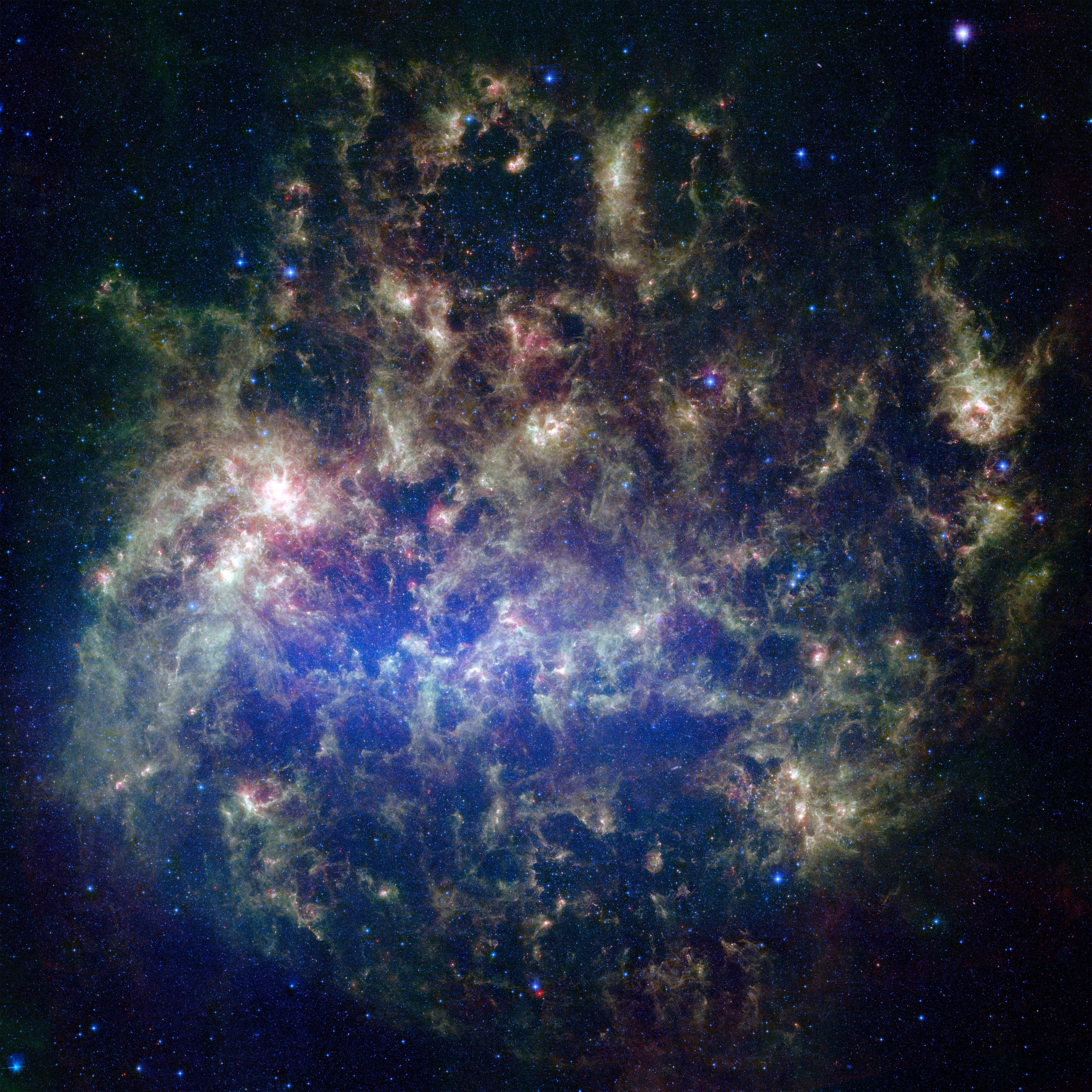
By Robert D. Braun
Now that NASA is headed back in the direction of becoming a space flight development agency, the Agency’s need for highly capable space systems engineers is greater than it has been since the end of the Apollo program.
Unfortunately, at many NASA field centers the current demand for capable space systems engineers with strong technical leadership skills far exceeds the supply. This issue has been overshadowed by media debates about the destinations and timetables for the vision for space exploration and the challenges of returning the Space Shuttle to flight. As a former NASA space systems engineer and a professor of space technology, I believe that systems engineering technical competency is central to NASA’s ability to realize its bold human and robotic space exploration plans.
Today, there are a number of high-caliber space systems engineers in the Agency’s field centers who eat, sleep, and breathe technical excellence and possess the development expertise needed to craft our nation’s future exploration programs. Complemented by systems-savvy project managers who carefully balance technical risk, cost, and schedule, these personnel are the heart of any successful development effort. But, because NASA has operated for more than a decade without a development initiative on the scale of the new vision for space exploration and was given limited hiring authority during this time, I do not believe the Agency is currently staffed with enough experienced space systems engineers to complete its mission.
While pockets of systems engineering excellence exist at each NASA Center, few of these organizations have sufficient in-house systems engineering and project management expertise to meet the demands of all the development missions presently assigned. For NASA to successfully implement the vision for space exploration, the NASA field centers must be transformed into technically focused organizations distinguished by space flight development rigor. These missions demand a focus on technical excellence across the organization, a systems engineering approach to project implementation, technical insight and crisp decision-making from project managers, clear communication across the organization, and early risk identification, prioritization, and mitigation. Some of the necessary expertise can be developed and sharpened through cross-fertilization of systems engineering skills, experiences, and organizational approaches among its field centers. For example, space flight development practices and personnel at the Jet Propulsion Laboratory and Goddard Space Flight Center have been honed by decades of robotic exploration mission and flight system development. Lessons learned at those centers could be directly applied to the Agency’s human space flight efforts by way of workshops, collaboration, and the rotation of systems engineering personnel in the next few years — early enough to benefit NASA’s major near-term human space flight development tasks.

This artist’s concept of the proposed Mars Sample Return mission shows a rendezvous of the orbiting sample container with the Earth return vehicle.
Photo Credit: NASA Jet Propulsion Laboratory
Good systems engineers are not born; they are created over time. Intellectual curiosity and education are required, but so is substantive experience operating across the boundaries of traditional aerospace disciplines in a hardware or mission development setting. As a university professor, I know that the knowledge needed to become a skilled systems engineer cannot be found in a textbook or classroom. We teach orbital mechanics, aerospace structures, space propulsion, and even systems engineering methodology, but the traditional educational approach is ill equipped to prepare a real space systems engineer. The important skills can only be mastered from years of “doing the work” in a space flight development culture. While a traditional university curriculum can provide the foundation and tools needed to begin a successful space systems engineering career, a complete space systems engineering perspective requires a hands-on development experience that spans the whole life cycle of a project.
Paramount to strong systems engineering expertise is the ability to see the big picture; seamlessly integrate the contributions of disparate disciplines; balance technical, cost, and schedule risk; and learn from failure as well as success. Over the course of my NASA career, I sharpened these systems engineering skills by working as part of small, focused teams, including those responsible for the Mars Pathfinder, Deep Space 2 Mars Microprobes, Mars Sample Return Earth Entry Vehicle, and ARES Mars Airplane hardware development activities. These efforts continuously strove to reduce technical risk while living within stringent cost and schedule constraints. Thinking back on these space flight system development efforts, I am struck by a few common characteristics — the engineering excellence each of these teams exhibited daily, their passionate commitment to achieving the team goal, clear communication and camaraderie, and a singular focus on mission success. Succeed or fail, space flight system development is about enjoying and learning from the ride. Members of these teams did just that, learning from each developmental struggle, becoming stronger and wiser, and eventually applying these lessons to larger space flight projects like the Mars Exploration Rover missions and the Mars Science Laboratory. Such small space flight development projects serve a vital personnel development function, allowing for creativity, learning, and innovation, requisite steps to becoming a true space systems engineer.

In Kennedy Space Center’s Spacecraft Assembly and Encapsulation Facility- 2, Jet Propulsion Laboratory workers mate the Mars Pathfinder small rover to one of the lander’s three petals.
Photo Credit: NASA Kennedy Space Center
To meet NASA’s space systems engineering needs of the future, the Agency must create a hands-on development environment in its field centers, relying on strong systems engineers to understand and evaluate mission risk. Landing on Mars will never be a low-risk venture, nor will developing a telescope capable of detecting Earth-size planets around other stars, flying a new generation of human-rated launch systems, or carrying out a lunar surface mission. Our nation needs to dream big, and these are precisely the right missions for NASA to pursue. For ambitious projects like these, when low risk is not an option, good systems engineers who understand from experience how to identify, assess, and reduce risk are vital. A long-term development culture at all NASA field centers will nurture the space systems engineering expertise we need among the Agency’s current personnel. A mix of small and large space flight projects is needed to develop this expertise, providing both “sink or swim” and mentor/apprentice experiences, while allowing each of NASA’s Centers to develop appropriate systems engineering practices and gain a stronger understanding of the concept of acceptable risk. This may be the most effective way to grow the Agency’s current personnel for the missions of tomorrow.
We must also start early, improving and expanding on the relatively small number of opportunities students in our nation’s universities have to participate in hands-on space systems development and operations activities. These efforts require only modest funding and may be the only way to create the pipeline of space systems engineering talent the Agency will need in the future. Recently, the number of such opportunities has been reduced as NASA focuses its resources on large, near- term human space flight development efforts. This choice may work in the near term, but where will the systems engineers for the 2018 human lunar mission cut their teeth? Without the proper smaller-scale hardware development and mission operations experiences to teach them how to design, test, fail, re-design, test again, and then fly, these systems engineers will simply not be there in NASA’s time of need. Such smaller-scale efforts have the potential to dramatically increase the number of young space systems engineers with the interest and experience to help them carry out the Agency’s plans for human lunar exploration. Hands-on student activities would offer meaningful learning experiences by spanning the complete project life cycle while providing immediate benefits, enhancing the scientific return of NASA missions or advancing important space systems technologies. Sponsoring student-focused hardware development activities would also encourage a closer working relationship between current NASA engineers and the outstanding generation of young engineers in the nation’s universities, improving the pool of new engineering talent that NASA can draw on as the students graduate.
NASA is returning to its roots as a space flight development organization. Success will depend on large numbers of the Agency’s current technical staff getting experiential training to make up for more than a decade of neglecting the Agency’s technical expertise, particularly in the areas of space systems engineering and space flight project management. Small space flight development efforts must be a vital element in the Agency’s personnel development strategy, providing a practical means of building a systems engineering competency and an environment in which well-understood risk can be taken, technical creativity and innovation applied, and space flight development lessons learned. In addition, the best way to develop the expertise NASA’s multidecade exploration program requires is to increase the number of hands-on space systems development and operational activities at our nation’s universities. NASA has been given a grand set of future human and robotic space system challenges. Agency management must focus on growing the personnel who can successfully make this bold vision a reality.










